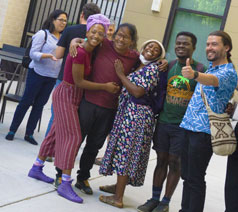The University of Florida and Brazil’s São Paulo Research Foundation (FAPESP) co-fund research between researchers at UF and those at institutions in the state of São Paulo. The FAPESP-UF Partnership and Collaborative Research Grants will be administered by the Florida-Brazil Institute, which was created by the Florida Legislature to help strengthen the state’s foreign relations and to promote business, educational, cultural and scientific exchange between Florida and its largest international trading partner. The Institute is part of the UF Center for Latin American Studies, which was founded in 1930 and whose mission is to advance knowledge about Latin America and the Caribbean and its peoples throughout the hemisphere. With over 170 faculty from colleges across UF, the Center is one of the largest institutions for interdisciplinary research, teaching and outreach on Latin America, Caribbean, and Latino Studies.
The recipients of this year’s awards are:
- Carlos Roque Duarte Correia (Instituto de Química/Unicamp) and Aaron Aponick (Department of Chemistry/UF): “The development of novel gold and palladium-catalyzed transformations involving both redox active and neutral catalyst systems (FAPESP#: 2013/50120-2).”
- Eduardo Colombari (Fac. Odontologia Araraquara/Unesp) and Colin Sumners (Dept. of Physiology and Functional Genomics/UF): “Unesp-UF: hypertension research exchange program (FAPESP#: 2013/50121-9).”
- Karina Martins (Centro Ciencias Tecnologias Sustentabilidade/UFSCar) and Salvador Alejandro Gezan (Institute of Food and Agricultural Sciences, School of Forest Resources and Conservation, UF): “Ecological and genetic processes that affect Copaifera langsdorffii remnant populations in the Atlantic Forest (FAPESP#: 2013/50119-4).”
- Lilian Amorim (Esc. Superior Agricultura Luiz de Queiroz/USP) and Natalia A. Peres Lautentti (Institute of Food and Agricultural Sciences, Dept. of Plant Pathology, UF): “Improved PFD control in São Paulo and Florida: using weather forecasts to anticipate disease risk in citrus groves (FAPESP#: 2013/50116-5).”








